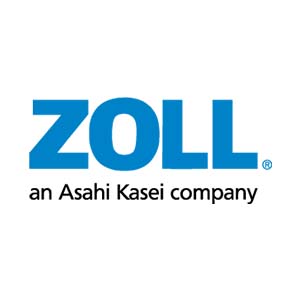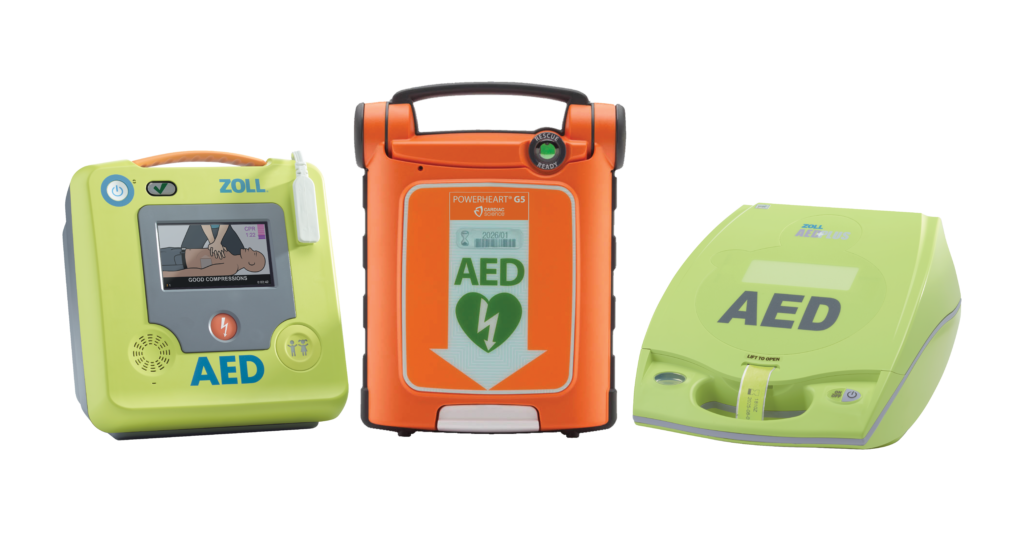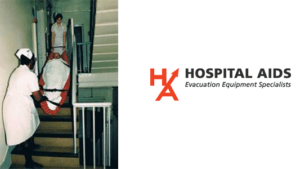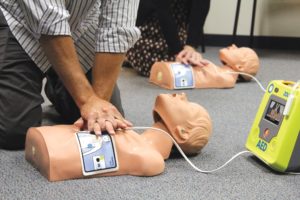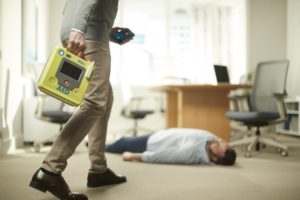ZOLL® offers many clinically advanced manual monitor/defibrillators and automated external defibrillators (AEDs) to help improve survival outcomes for victims of sudden cardiac arrest (SCA) and other heart arrhythmias.
What Is the Purpose of Defibrillation?
Defibrillation employs electric shocks (also known as counter-shocks) to re- start a stopped heart — or to temporarily stop a chaotic rhythm — and restore normal cardiac rhythm.
Only defibrillation can repair certain types of cardiac rhythms, such as pulseless ventricular tachycardia (VT), ventricular fibrillation (VF), and SCA coupled with VF and SCA produced by dysrhythmia. The following symptoms are common markers of cardiac rhythm problems:
- shortness of breath
- chest pain
- rapid heartbeat
- loss of consciousness
Why Early Defibrillation Matters
Since VF, VT, and SCA can happen to anyone anywhere — in or out of the hospital or even at home — it is vital that defibrillation devices are widely available. Speed to therapy as well as high-quality CPR are essential to improving outcomes.
Research indicates that survival rates increase when victims receive high-quality CPR and a shock with an AED before emergency service personnel arrive.1 It’s equally important that defibrillators are easy to use and provide rescuers with CPR feedback, helping them deliver CPR that meets the American Heart Association’s definition of high quality and improves the chances of a victim’s survival.
To address this, all ZOLL manual defibrillator devices and AEDs feature some form of CPR feedback that uses text, audio, or graphics to let rescuers know their CPR is meeting the high-quality metrics. Some ZOLL defibrillators feature Real CPR Help® and others feature Intellisense CPR™. All provide real-time coaching and CPR feedback on rate and depth of chest compressions.
The AED mode on our R Series® monitor/defibrillator also encourages BLS responders to apply electrodes and deliver therapy if needed while waiting for the ALS team to arrive.
How to Use a Defibrillator
AEDs are designed for bystanders without emergency medical training. If you see someone displaying signs of cardiac arrest, immediately call 911 and have another bystander locate the nearest AED. Perform CPR until the bystander returns with the AED.
Follow the device’s guidance to attach the electrodes to the victim. The AED will advise you whether to continue CPR or stop so that it can analyze the victim’s heart and deliver a shock. Continue to follow the audio or on-screen text instructions provided by the device until emergency services arrive or until the victim displays obvious signs of life. For more in-depth instructions, read our guide on how to use an AED.
Manual defibrillators, on the other hand, are designed to be operated by formally trained medical staff. Professionals can supplement their formal training using device-specific videos, like this one that illustrates how to set up and use a ZOLL X Series® monitor/defibrillator.https://www.youtube.com/embed/r02JVFI_lqg?enablejsapi=1&origin=https%3A%2F%2Fwww.zoll.com
How ZOLL Defibrillators Work
ZOLL AEDs assess a victim’s heart rhythm during an SCA event to determine when it’s appropriate to deliver a shock. Once a shockable rhythm is detected, the AED will either deliver a shock automatically or instruct the rescuer to do so by pushing a button. The AED will then advise a rescuer on next steps.
ZOLL AED Plus and AED Pro feature a proprietary Rectilinear Biphasic™ waveform (RBW) technology, which delivers shocks that are both low-energy and high-current. RBW is the only biphasic waveform that has demonstrated clinically superior results as compared to monophasic waveforms for:
- Cardioversion of atrial fibrillation
- Defibrillation of VF in high-impedance patients
- Defibrillation of VF in out-of-hospital cardiac arrest in an advanced cardiovascular life support (ACLS) environment*
At 200 joules, the ZOLL RBW delivers more average current to high-impedance patients than any other biphasic waveform — even defibrillators with higher energy settings.
*The data demonstrate the equivalent efficacy of low-energy rectilinear biphasic shocks compared to standard high-energy monophasic shocks for transthoracic defibrillation for all patients in VT/VF at the 95% confidence level. The data also demonstrate the superior efficacy of low-energy rectilinear biphasic shocks compared to standard high-energy monophasic shocks in patients in VT/VF with high transthoracic impedance at the 90% confidence level.
1Weisfeldt ML, et al. J Am Coll Cardiol. 2010;55(16):1713–20.

